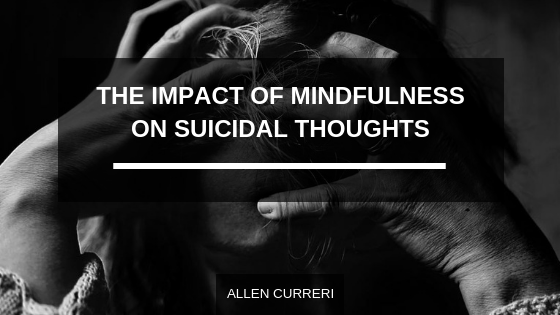Mindfulness has only grown as an effective means of self-betterment, and there is perhaps no stronger example of this then its positive impact on adverse, damaging thoughts — namely suicidal compulsions. Increased awareness in one’s immediate surroundings, alone, has been identified as successful in reducing relapses in depression and other damaging behaviors linked to suicide.
Recent decades have seen suicide, especially that observed in youth, rising to near crisis levels, and this epidemic has spurred some communities and institutions to adopt mindfulness as a creative alternative treatment approach.
Turning the tide
The effect of mindfulness on suicidal thoughts is twofold; it allows people to think more mindfully about their lives — improving their quality of life in ways that could subsequently mitigate depression and other bleak feelings contributing to such thoughts — and, more specifically, it equips them with the ability to mindfully dissect the suicidal thoughts themselves.
As mindfulness, by definition, broadly entails deep self-exploration of one’s thoughts, by default it helps combat self-destructive urges by placing each nuance and contributing factor on display. For example, one may ask his or herself, “why are these thoughts appearing in my head?” and “am I currently believing and succumbing to these thoughts — and if so, why?” This questioning, in turn, can lead to helpful revelations that can potentially shift the tide of negative emotions, leading to stronger mental equilibrium and self-awareness.
While this process is, in no means, intended or perceived to be a cure-all method, it potentially holds the power to get someone through a tough time — perhaps at least to the point where they could seek additional help from a professional.
New ideas (and fine tuning what exists)
Mindfulness-based suicide prevention has boiled down to an interlacing of new approaches and revamped old approaches. In Iowa, for instance, a variety of groups and supplementary initiatives now strive to mindfully reduce suicidal tendencies in youth; this includes heightened regulatory measures aimed at anxiety, trauma-induced anger, self-loathing, and other adolescent and preadolescent behaviors commonly identified as byproducts or harbingers of suicide. By enacting this approach, these collectives are able to inject modern mindfulness practices into existing and ever relevant findings linked to suicide.
These types of ideas and changes are far from new or exclusive, as they have been observed and highlighted in an increasing amount of areas in recent years. That said, moving forward, expect to see mindful thinking continue to establish a niche in the broad suicide discussion.


